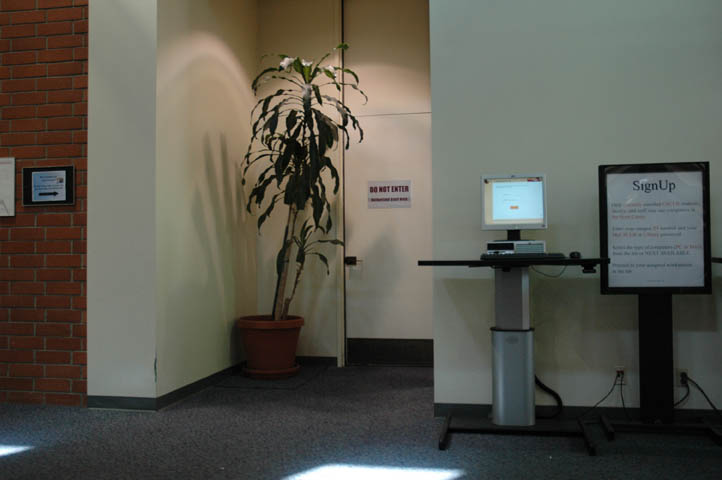Many Cal State Long Beach students visit the Horn Center regularly, but few have any idea the building has the potential to protect the lives of California State University students across the state.
The Emergency Operations Center, located in the Horn Center across the hall from the Macintosh Computer Labs, can facilitate decision-making in emergency situations by using real-time information to link CSULB with other CSUs.
University Police Lt. Scot Willey and Sgt. Rick Goodwin, coordinator of the EOC, said they hope CSULB will eventually become the hub for the program by signing up all 23 campuses in the CSU system. Goodwin said Cal State Northridge is among the schools signed up.
CSU campuses and community colleges can join the EOC by paying for a portion of CSULB university police’s licensed software, campus police said. The user-friendly software costs university police between “$9,000 and $10,000 per year,” Goodwin said.
“If anything happens, [city officials] are going to have their own priorities and we’re not it. So what we decided is what we needed was to create a response for CSULB in particular,” Willey said.
The EOC is meant to be used in case of a large-scale emergency, such as a major earthquake or a pandemic outbreak like the H1N1 flu. Also, because CSULB is in a metropolitan city with a large shipping port, Long Beach could be the target of terrorist attacks, CSULB police said.
“We just jumped out there and took charge,” Willey said. “We’re one of the larger universities so we try to be at the forefront of technology. We try to be a leader in the state.”
EOC staff members include personnel from facilities, planning, and logistics; and finance and administration. In addition to these members, some situations may include recruits from other agencies such as the fire department, Long Beach police and the Red Cross.
It allows for quick communication, as the tasks that have been carried out are entered into the system with a time stamp. In order to alleviate confusion, the system uses plain text, unlike the Los Angeles and Orange County police departments, which use different codes.
“If we didn’t have this, we’d be able to take care of it but this sure makes it easier to have everything in one place,” Willey said.
Not all emergencies will result in full activation of the EOC, said Rick Goodwin, CSULB police sergeant and the coordinator of the EOC.
It is based on a three-level system, ranging from Level 1 — which would require one to eight staff members and be activated in instances such as isolated swine flu cases — and Level 3, which would require 20 to 25 staff members in an instance such as a 7.5 earthquake. The system could be activated at Level 3 and go back to Level 1 once the campus is under control.
When CSULB had a student infected with swine flu in May, the EOC was activated at Level 1. During business hours, there was always someone in the center listening to local news and assessing the situation. Upon realizing precautions were better taken on a long-term basis, the Level 1 activation was shut down.
“This university is on the job,” Goodwin said. “When H1N1 struck, your president was on it. He didn’t say ‘It’s a flu.’ “No, he said, ‘We need to step this up and safeguard the students.'”




